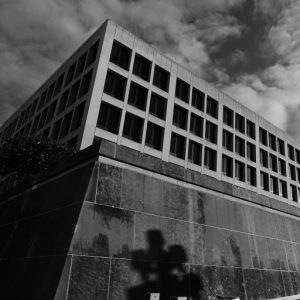 When the same party controls the White House and both houses of Congress, there is always a danger that Congress will fail to provide appropriate oversight over government agencies. Congress is tasked with ensuring that government agencies are actually doing what the law says they are supposed to do, and that they use their budget allocations as Congress intended. The Republican-controlled Congress has pretty much given up on overseeing government agencies like OSHA, leaving oversight responsibilities to the Government Accountability Office (GAO) and each agency’s Inspector General (IG).
When the same party controls the White House and both houses of Congress, there is always a danger that Congress will fail to provide appropriate oversight over government agencies. Congress is tasked with ensuring that government agencies are actually doing what the law says they are supposed to do, and that they use their budget allocations as Congress intended. The Republican-controlled Congress has pretty much given up on overseeing government agencies like OSHA, leaving oversight responsibilities to the Government Accountability Office (GAO) and each agency’s Inspector General (IG).
But the most important institution that we have today to provide government oversight is the free press.
In the case of OSHA, Suzy Khimm of NBC News has written a valuable article, “Number of OSHA workplace safety inspectors declines under Trump,” documenting a 4% decline in in OSHA inspectors since Donald Trump took office. “In the months after President Donald Trump took office, the Occupational Safety and Health Administration lost 40 inspectors through attrition and made no new hires to fill the vacancies as of Oct. 2, according to data obtained through a Freedom of Information Act request….raising questions about the government’s efforts to protect workers and the long-term impact of the White House’s move to slow hiring.”
Khimm’s article follows similar reports of overall government staffing cutbacks, including last month’s Washington Post article by Lisa Rein and Andrew Ba Trim, chronicling Donald Trump’s largely successful effort to shrink the federal government.
Khimm reports that although Trump instituted a government-wide hiring freeze when he took office, that freeze was lifted in April — but apparently not at OSHA. It wasn’t until August that Secretary of Labor Alex Acosta, reportedly panicking at the decline in OSHA inspections, partially lifted OSHA’s hiring freeze — for inspectors only. The lifting of the freeze did not apply to managers, administrative staff, whistleblower investigators or any other OSHA staff. (I have described the implications of the partial lifting of the hiring freeze here.)
(OSHA inspections did actually rise by a few hundred by September 1, the end of FY 2017, not because of the lifting of the hiring freeze — the effect of which won’t be seen for years — but most likely because OSHA inspectors focused on easier and faster construction inspections to bolster the year-end numbers.)
Where Is OSHA Leadership?
The role of an Agency’s leadership is to advocate for the agency’s mission — in OSHA’s case, first and foremost “To assure safe and healthful working conditions for working men and women; by authorizing enforcement of the standards developed under the Act.”
While agency leadership is most visible to the public in the form of speeches, testimony and press interviews, much of the work of the leadership of any government agency takes place internally, away from public view — managing the agency’s resources effectively and advocating for the agency’s budget and staff needed to fulfill the agency’s mission and promote necessary program and policy improvements.
It’s clear that OSHA’s current leadership is missing in action.
Clearly a Republican administration has different opinions as how to further an agency’s mission than a Democratic administration, but the fact is that OSHA is funded by Congress to maintain a certain level of staffing and enforcement — and it’s failing. It’s up to OSHA leadership to advocate within the Department of Labor, and through the Department to the White House, if necessary. And I think it’s clear that OSHA’s current leadership is missing in action.
 OSHA has no Assistant Secretary. Scott Mugno is likely to be confirmed by the Senate to head OSHA sometime soon, and will hopefully be a strong advocate for OSHA’s mission. But since July, the agency had been led by Loren Sweatt who seems to be the very model of an ineffective leader. We’ve already written about how she’s home alone, with no Deputies or Chief of Staff to support her or brief her. As far as we can tell from OSHA’s website or internet searches, she has given no speeches and conducted no press interviews. she has also provided no testimony to Congress, which is not her fault, as Congress has held no oversight hearings on OSHA’s operations. She rarely meets agency managers and it’s clear from Khimm’s report that she is not advocating — or not effectively advocating — to keep OSHA’s staff at a functioning level.
OSHA has no Assistant Secretary. Scott Mugno is likely to be confirmed by the Senate to head OSHA sometime soon, and will hopefully be a strong advocate for OSHA’s mission. But since July, the agency had been led by Loren Sweatt who seems to be the very model of an ineffective leader. We’ve already written about how she’s home alone, with no Deputies or Chief of Staff to support her or brief her. As far as we can tell from OSHA’s website or internet searches, she has given no speeches and conducted no press interviews. she has also provided no testimony to Congress, which is not her fault, as Congress has held no oversight hearings on OSHA’s operations. She rarely meets agency managers and it’s clear from Khimm’s report that she is not advocating — or not effectively advocating — to keep OSHA’s staff at a functioning level.
Workers Pay The Price
Of course, this report is not really about bureaucrats, or failing leadership; ultimately it’s about workers. And nothing good for workers can come from declining number of inspectors. We’ve already written about how some of OSHA’s regional staff report that because of the hiring freeze, OSHA’s enforcement and whistleblower programs are “falling apart at the seams.” The agency is “just bleeding.”
“The lack of new inspectors makes OSHA invisible. If employers don’t think OSHA will come, workers are much more likely to be hurt.” — Dr. David Michaels
Even if the agency starts hiring inspectors, that only addresses part of the problem if numbers of managers, administrative staff and whistleblower investigators continue to dwindle. The bottom line is more sick, injured and dead workers. Fourteen workers were killed in the workplace every day last year, and the number of workers killed annually has gone up for the last three years. Workplace deaths and injuries are estimated to cost between $250 billion and $360 billion a year, and OSHA’s current annual budget is a measly $552 million. OSHA only has 5.3 compliance officers per million workers in 2016. In 1980, when Ronald Reagan became President, that number was 14.8 – over 2 ½ times what it is today.
The bottom line is that shrinking government is not just about reducing employees and “bureaucrats,” or combating “waste, fraud and abuse;” it means limbs severed and lives lost. As former OSHA head David Michaels said in Khimm’s article, “The lack of new inspectors makes OSHA invisible. If employers don’t think OSHA will come, workers are much more likely to be hurt.”
And the current negligence promises to hurt the agency and American workers for years to come. As I said in Khimm’s article, it typically takes months of training and experience in the field for agency inspectors to get up to speed. And that’s an understatement. New hires generally aren’t ready to conduct inspections on their own for at least a year or more at the agency. “Even after OSHA hires someone, they can’t just send them out to do an inspection by themselves,” Barab said. “This will have an impact for years.”
That’s assuming that OSHA actually starts hiring. But so far, according to Khimm, OSHA hasn’t hired any new inspectors. “Federal hiring is often a protracted process, and OSHA requires its inspectors to pass a medical exam, among many other requirements. As of Sept. 30, the agency had 54 inspection staff vacancies and still hadn’t hired any new inspectors.”
And being as retirements and resignations don’t happen evenly across the country, some areas are hit harder than others:
In Mississippi, which has one of the country’s highest worker fatality and injury rates, the number of federal OSHA inspections fell by 26 percent from Trump’s inauguration in January to the end of September, according to public data. Other federal offices in the region saw smaller declines in OSHA inspections during the same time period, ranging from a 5 percent drop in Alabama to a 1 percent reduction in Georgia.
Debbie Berkowitz, who was an OSHA official in the Obama administration, attributed the drop-off in enforcement to staffing shortages. OSHA did not specify how many inspectors had left in each state, but, according to the latest personnel data, the agency’s Mississippi office fell to 14 from 18 full-time employees by the end of September.
“They can’t do it all, they can’t keep up,” said Berkowitz, now a fellow at the National Employment Law Project. “What we noticed in Mississippi is there were a lot of reports of very serious injuries that OSHA wasn’t inspecting.”
Ultimately, the only way to provide effective oversight over government agencies is for Congress to start doing its job again. But that may not happen until 2019
Khimm reports that a DOL spokesperson claim that OSHA’s inspection problems in the south were not due to staffing problems, but to due to last year’s hurricanes — which makes very little sense. First, the hardest hit areas in the United States were Texas and Puerto Rico. Texas is in OSHA Region VI and Puerto Rico is in OSHA Region II. Mississippi is in OSHA Region IV. Florida is also in OSHA Region IV, but it hurricanes were really to blame, Regions VI and II would have been hardest hit, not Region IV. And Khimm notes that “OSHA inspections in Mississippi were declining before the first hurricanes made landfall.”
What Is To Be Done
Investigative reporters need to continue to carefully monitor OSHA’s staffing and enforcement situation. The IG and GAO should look into OSHA’s failure to maintain adequate staffing levels that have been funded by Congress.
But ultimately, the only way to provide effective oversight over government agencies is for Congress to start doing its job again. But that may not happen until 2019 — and that will depend on the outcome of next November’s mid-term elections. Workers’ lives literally depend on the outcome.
[…] an example of deregulatory fervor running amuck and costing lives. “The bottom line,” wrote former OSHA official Jordan Barab, “is that shrinking government is not just about reducing […]
[…] Barab, a former deputy assistant secretary of labor at OSHA, pointed out in his blog post on Confined Space, “This is an agency that hasn’t had a budget increase since 2010, that is tasked with ensuring […]